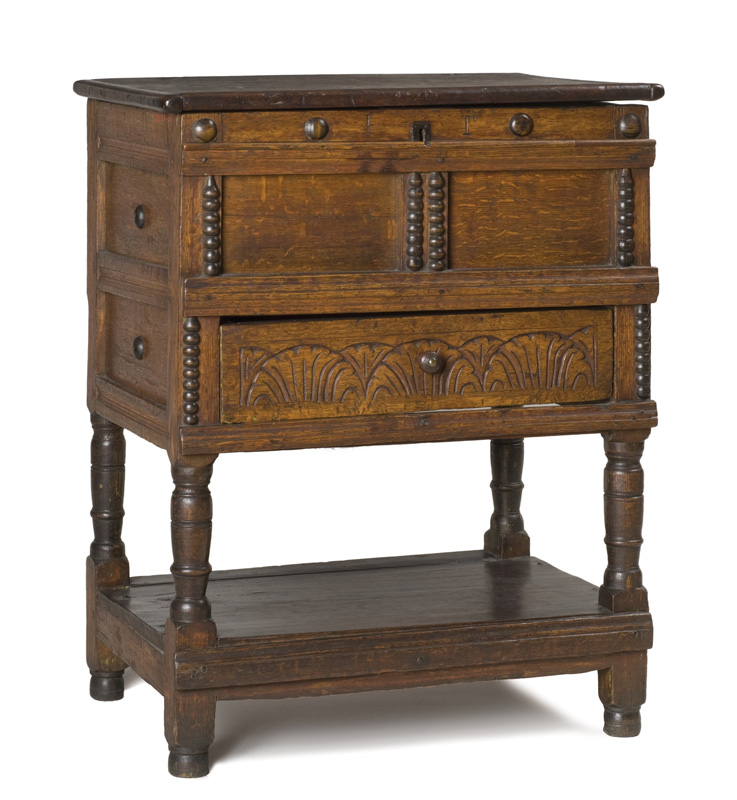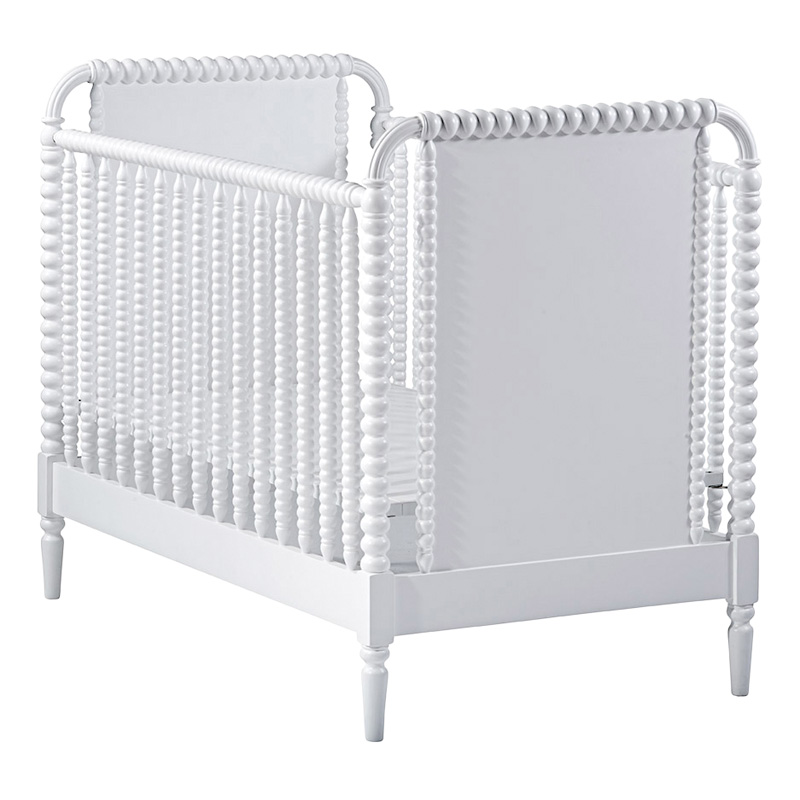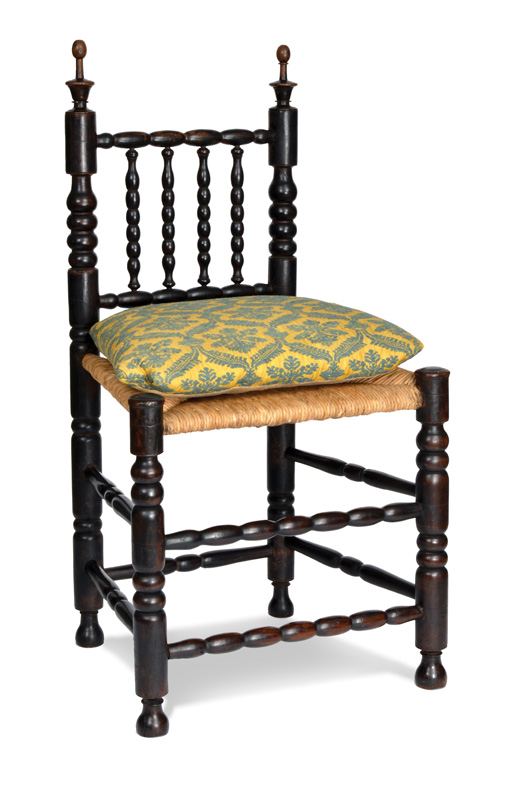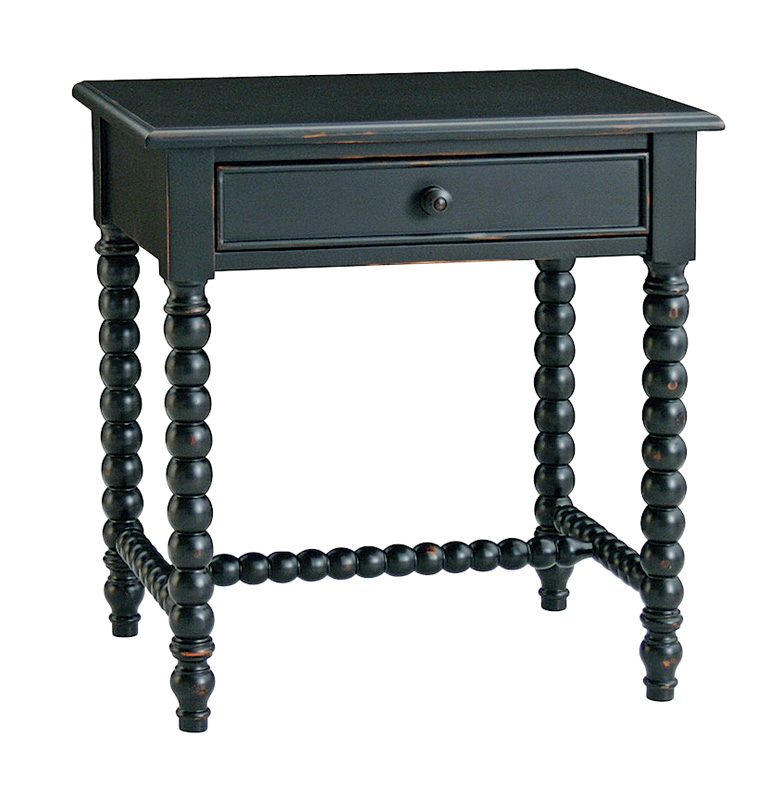A spool-turned or bobbin bed furnishes this traditional bedroom in Georgia.(Photo: Gridley + Graves)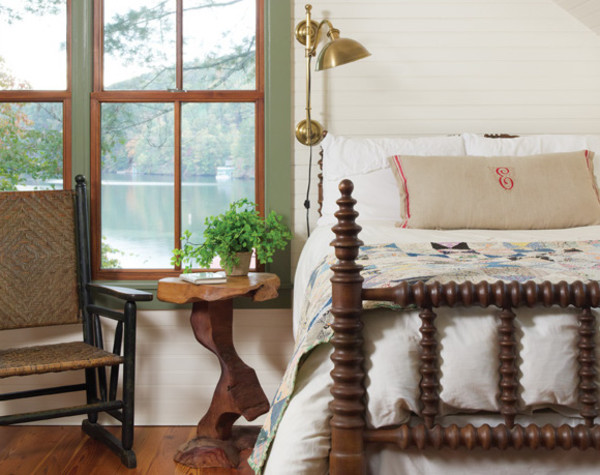
The style is associated today with children’s furniture: cribs, beds, and dressers identified by distinctive, if simple, turned rails and embellishments. Beds especially are often referred to as “Jenny Lind.” Yet what is also commonly, and somewhat mistakenly, referred to as “spool-turned” furniture had a history in the U.S. long before the Swedish opera singer took America by storm in 1850.
Widely manufactured in the late 19th century, spool-turned furniture endured a reputation as declassé Victoriana, garnering scant attention from museums and collectors. Its antecedents of the 1600s, as well as early examples dating from the Elizabethan Revival of the 1820s, were overshadowed by the mass quantities manufactured after the 1850s. The machine-made pieces—commonly small tables and stools made of oak or maple—are readily found in casual antiques markets. Yet among Victorian-era furniture styles, spool furniture is one of the few still manufactured and sold today. Visit a showroom or look at catalogs to see that it is enjoying a popular resurgence.
Machine-made, late 19th-century spool furniture, both clear-finished and painted, is widely available. (Photo: Debra Judge Silber)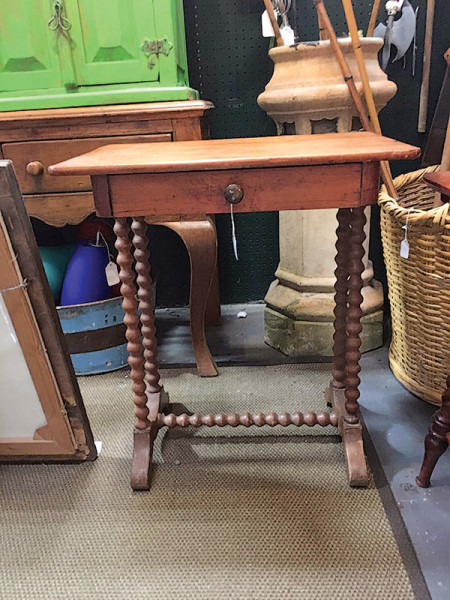
While “spool” or “spool-turned” is the common term, a more accurate description might be “ball-turned” or “button-turned.” The former refers to the distinct round shape of the turning, the latter refers to the lathe technique used by button makers (in which a rod was shaped into a series of small balls and then sawn apart). Over the years, however, a variety of descriptors and motifs have been tossed into the spool bucket, including bobbin, knob, sausage, and vase-and-ring turnings. What they have in common is their mimicking ornate, hand-carved English and Dutch pieces of the 16th and 17th centuries. American efforts included three-legged, ball-turned “joint” stools common in 17th-century homes, as well as squarish Cromwellian chairs with a tacked leather back and button-turned legs and spindles. More elegant styles superseded spool turning in the 18th century.
Dating to the 1840s, this walnut chair has an eclectic style that might have been called Gothic or Elizabethan. (Courtesy: Yale Univ. Art Gallery)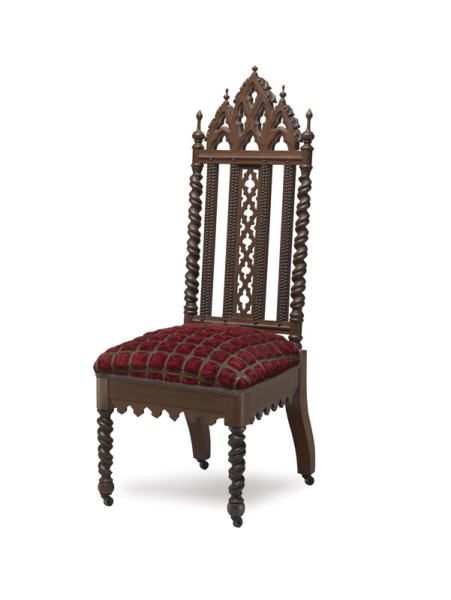
The repetitive, rounded turnings resurfaced in the 19th century, part of a romantic throwback to Gothic, Elizabethan, and Jacobean styles. Relatives include the spool-turned—or, for the well heeled, the barley-twist—Gothic side chair with its arched-back and steeple-turned finials. At the opposite end of the economic scale, spool turnings were often seen on rope-lattice “hired-man’s beds” popular in the early 1800s.
With the introduction of steam-powered lathes, spool turning became faster and cheaper. By mid-century, spool-turned pieces were among the first consistently factory-manufactured, mass-produced styles of furniture, and included sofas and drop-leaf tables as well as chairs and beds. Just as the rugged colonial ball turnings had approximated furniture crafted in Europe, machine-lathed pieces of the 19th century mimicked elaborately carved furniture for a new middle class.
As part of a romantic throwback to Gothic, Elizabethan, and Jacobean styles, repetitive, rounded turnings came back in the 19th century. One example is the spool-turned (and also the barley-twist) Gothic side chair.
Ornamental and stylish yet affordable, spool furniture was a natural fit for the Gothic and picturesque cottages popularized in the 1840s. Domestic tastemaker Sarah Josepha Hale, editor of Godey’s Lady’s Book, instituted a “Model Cottage Department” in 1846, further promoting the style. Within a few years furniture manufacturers began making simple painted “cottage bedroom sets” in both the spool-turned and Louis XV style. Ever since, painted spool furniture has been identified as Cottage Style, particularly the beds.
By 1876, factories making spool beds had applied the style to ottomans, footstools, and the étagère or whatnot shelf, typically made of black walnut, maple, birch, oak, or other native hardwood, and occasionally mahogany. The beds, originally angular, had evolved into three main types: the original style with head- and footboards having horizontal and vertical turned rails; a variation with a triangular (arched) headboard topped by a spool-turned edge; and the common variation that became associated with Jenny Lind, in which vertical posts are surmounted by curved connectors that join it to a spooled top rail.
Oddly enough, the piece of spool furniture most significant in American history was not a bed, but rather a small table. An 1867 painting by Louis M. D. Guillaume romanticizes the surrender that ended the Civil War by placing both Robert E. Lee and Ulysses S. Grant at the spool-turned table used by Grant at Appomattox Court House. Lee, in fact, did his signing at a marble-topped table across the room.
Sweet Elle offers a collection of “spindle furniture,” including variations on the spool-turned bed.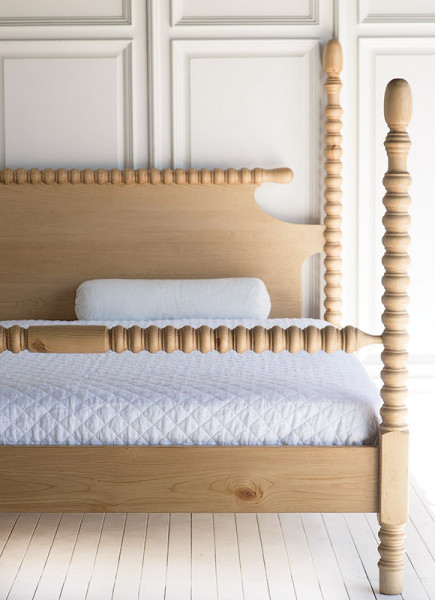
JENNY LIND’S BED?
Johanna Maria Lind spent many nights in the U.S. during her wildly popular concert tour, presenting an opportunity for furniture makers to claim that P.T. Barnum’s Swedish Nightingale rested in one of their beds. Celebrity endorsements—sanctioned or not—had been found to boost sales, and 19th-century entrepreneurs had little aversion to stretching the truth. By the time she returned to Europe, Jenny Lind’s name or likeness had been affixed to riding hats, cigars, dolls, perfume, and more. Still, the association between spool-turned beds and the name “Jenny Lind” appears to be a 20th-century phenomenon, likely an attempt to conjure a connection to simpler times after the fact.
Several bits of folklore connect the opera star with specific beds. The most widespread asserts that Philadelphia furniture manufacturer George J. Henkels placed a special bed—actually, a carved Rococo piece with a side canopy—in Lind’s hotel, and later gave it to her as a gift or, in a divergent ending, vowed to name it after her. A second story centers on a common, early 19th-century mahogany spool bed donated in 1969 to the Geneva (New York) Historical Society. The donor cited family lore that said Jenny Lind used the bed during a visit to the home of a well-heeled industrialist in Derby, Conn., not so far from Barnum’s hometown of Bridgeport. What is certain is this: The popularity of spool furniture coincided neatly with Lind’s 1850–52 tour. It’s very likely the exhausted singer slept in a fair number of the spool beds that would later bear her name.



